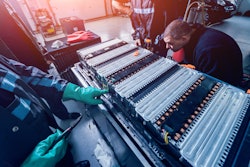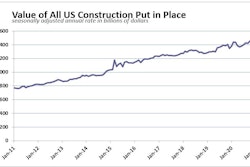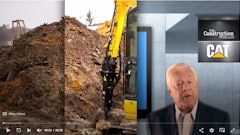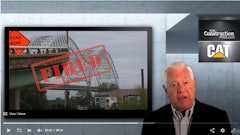500,000 -- that’s the number of electric vehicle charging stations the Biden Administration wants to build under the new $2.5 trillion infrastructure effort. Now, where will they go and who will build them? Those are questions construction industry officials are beginning to ask. Currently there are 41,000 electric vehicle charging stations in operation nationally, along with 115,000 gasoline stations. The logistical constraints in building out such a plan is mind boggling. DOT Secretary Pete Buttigieg has detailed so-called “alternative fuel corridors” nationwide where such systems can be built no more than 50 miles apart or five miles off of a designated highway, and list 134 Interstates and 125 U.S. highways as corridors.
Along that same vein, General Motors just announced plans with its joint venture battery partner LG Chem Ltd. to construct a second battery-cell plant at Spring Hill, Penn. GM says the 2.8 million square foot plant would employ 1,300 workers when completed. Construction is beginning immediately. GM already has a new battery plant under construction at Lordstown, Ohio, set to be completed a year from now. The automaker says the new $2.3 billion facility will support its decision to produce zero-emission light duty vehicles by 2035.
Dodge Data reports that total construction starts rose 2% in March to a seasonally adjusted annual rate of $825 billion as the Dodge Index itself rose to 175. Nonresidential building starts pushed the index higher while residential growth was nearly nonexistent and nonbuilding starts lost ground. Dodge Chief Economist Richard Branch remains bullish on the construction field as he believes it will consistently regain steam as the pandemic loses its grip on the country. Meanwhile, an interesting merger has been announced. Dodge Data will combine with the Blue Book Building & Construction Network. Dodge CEO Daniel McCarthy will head up the data operation.
We mentioned in the last Construction News Tracker the fact that ConstructConnect has developed a series of thousand-word charts on construction materials costs. Rising costs have become such an important factor to contractors, we wanted to provide a more meaningful background of certain items, such as the 64.9% year-over-year price hike in the cost of particle board, the 83.4 % jump in the price of softwood lumber, 53.1% rise in plywood costs, 79.5% hike in diesel fuel prices, the 57% jump in regular unleaded gas, and the list goes on. The Producer Price Index series is a worthwhile read.
Where are the pipes? That’s a question the Association of Metropolitan Water Agencies would like an answer to. The Biden Administration, in its infrastructure plan recently unveiled, wants to replace some 10 million lead drinking water pipes nationwide to avoid contamination, like what occurred a few years at Flint, Mich. But the EPA and other agencies say it’s nearly an impossible task to locate the pipes, as municipalities and water utilities have never properly inventoried lead service lines in their jurisdictions. EPA lead and water rules were enacted in 1991 and even then failed to fully locate lead service lines. A massive undertaking is said to be in the works.
AGC says that construction employment has bounced back in many states since the pandemic has eased, but not all. Analyzing federal labor department statistics, AGC Chief Economist Ken Simonsen says employment remained below March 2020 levels in 35 states despite a strong recovery. The numbers show a sharp drop-off in construction employment this year in those states that imposed work stoppages during the COVID pandemic such as New York and Michigan. Procore Technologies is also involved in the statistical research. The numbers show residential construction outpacing its 2020 position while nonresidential continues to lag.
Kobelco Construction Machinery has unveiled a work-around of its problem securing emissions-certified engines from its supplier Hino. Kobleco is announcing a deal with Yanmar and Isuzu Engines to supply the power to their mini and mid-range excavator lineups of equipment as well as their full-size excavators and cranes. The Hino engine deal fell through after the EPA rejected its emissions program effort.
Construction management firm Cumming has developed a construction market analysis that shows which cities are the most expensive to build in. Construction costs are already beginning to escalate and not just from increased materials prices or labor but due to general activity. Using Washington, D.C., as a baseline, one can easily conclude that New York, San Fransisco, Honolulu and Boston top the list. However, Cumming also tracked the square foot cost by building sector and discovered it costs roughly half to build in cities such as Atlanta, Nashville, Denver, Dallas, Orlando and Raleigh Durham, N.C.
ConstructionDive has outlined a list of mini mega cities that, despite the COVID pandemic, experienced construction booms. Driven by low cost of living and expanding job markets the listing outlines five Midwestern cities that are thriving with expansion: Cedar Rapids, Iowa, Columbus, Ohio, Nashville, Tenn., Omaha, Neb., and Rochester, Minn., all experienced the COVID outbreak but tackled it head-on and expanded their construction progress.
In closing: The Winding River Concept – move from bend to bend and each step along the way, face the problems but keep moving forward.



















